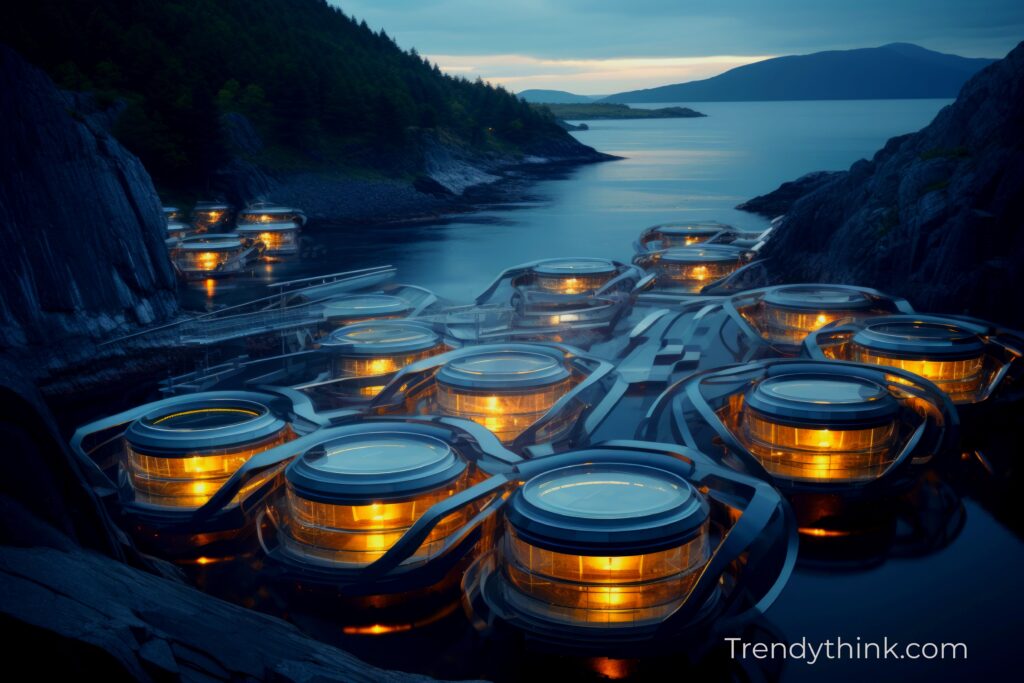
Deep offshore technology has transformed underwater resource discovery and use beyond 500 meters. This field expanded oil and gas extraction, advancing marine biology, underwater mining, and environmental science. As land resources decline, the oceans provide minerals and energy, requiring technology to resist tremendous pressures and hostile environments. Sustainable resource use, global energy sustainability, economic stability, and environmental protection require deep offshore technology.
Thank you for reading this post, don't forget to subscribe!Challenges of Deep Offshore Work
- Extreme Depths: Operations that take place at great depths need engineering solutions that can handle significant changes in temperature and pressure to succeed.
- Harsh weather conditions: are terrible. People who work offshore need to be ready for extreme and uncertain weather, like storms and high waves.
- Complex Logistics: Moving workers, equipment, and supplies to faraway offshore places is complicated because the logistics are complicated.
- Environmental Concerns: Protecting marine ecosystems and following environmentally friendly methods when doing tasks deep offshore is essential.
- High operational costs: Deep offshore projects need a lot of money, so cost management and new ideas are required to keep prices down.
Best Practices for Deep Offshore Operations
ROVs – Workhorses of the Deep
Operators at the surface can control tethered underwater drones known as ROVs. Equipped with robot arms, cameras, and other equipment, ROVs can perform intricate manipulation tasks such as pipe welding, particle removal, and subsea system installation. The newest styles allow deep diving down to 6,000 meters. Oil companies maintain deepwater oil rigs and pipelines mostly via ROVs.
AUVs – The Explorers
AUVs are untethered subsea drones, unlike ROVs. Once released, they navigate autonomously with propellers and thrusters driven by an onboard PC. AUVs utilized for underwater mapping, seafloor search, environmental monitoring, and navy surveillance. With sonars, cameras, and other sensors, AUVs can cover more floors than people. Some models dive into privately known oceans with intensity statistics.
Operational Best Practices:
Good communication is key to waste management. It helps keep operations running smoothly from exploration to decommissioning and implements recycling and waste reduction initiatives to lessen the environmental impact.
Safety:
Implementing safety protocols to maintain the well-being of offshore workers is vital. These protocols are using comprehensive training, regular safety drills, and health surveillance programs to guarantee the safety of all staff.
The Role of Advanced Equipment
Tech for the Depths
- The stability and accuracy required for deepwater drilling operations are best achieved by drill ships and semi-submersible rigs.
- Essential for keeping healthy control and avoiding disastrous blowouts are blowout preventers (BOPs).
- Pipelines and flexible risers are vital for pumping hydrocarbons from the ocean floor to processing plants.
- Maintaining operational stability is paramount, and dynamic positioning systems guarantee that boats and rigs are accurately positioned.
Case Studies
Two deep offshore projects that completed successfully are the Deepwater Horizon in the Gulf of Mexico and the Brent Field in the North Sea. Both projects highlight the significance of sophisticated drilling techniques and strategic planning. These initiatives have substantially contributed to oil production in the region and have established a standard for projects undertaken in the industry.
Conclusion:
In conclusion, deep offshore technology is crucial for accessing untapped energy resources, notwithstanding the distinct obstacles it entails. The industry can sustain its growth and success by following established safety protocols, utilizing cutting-edge technology, and optimizing operational processes. The achievements of projects in areas such as the Gulf of Mexico and the North Sea illustrate the capacity of deep offshore technology to propel advancement while upholding sustainability. Adopting new ideas and consistently striving for improvement will be crucial in improving this vital area, guaranteeing a stable and profitable energy future.
